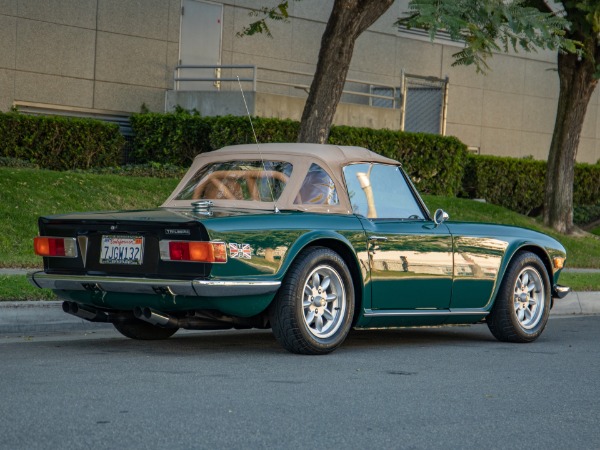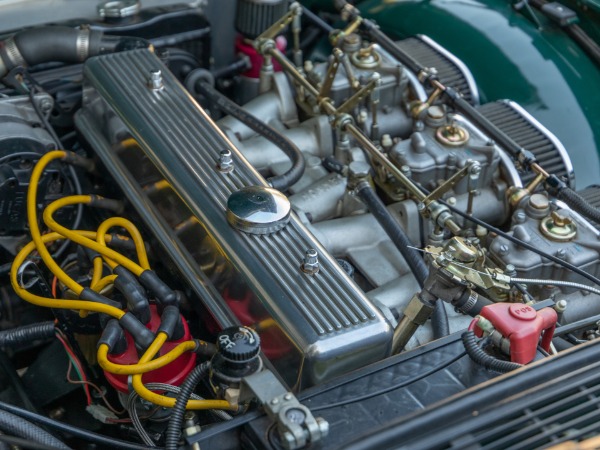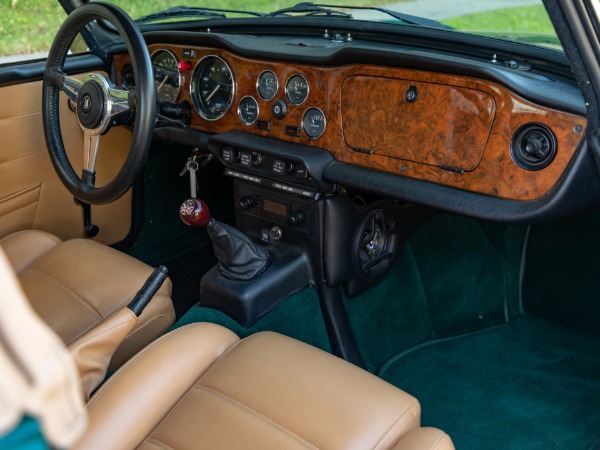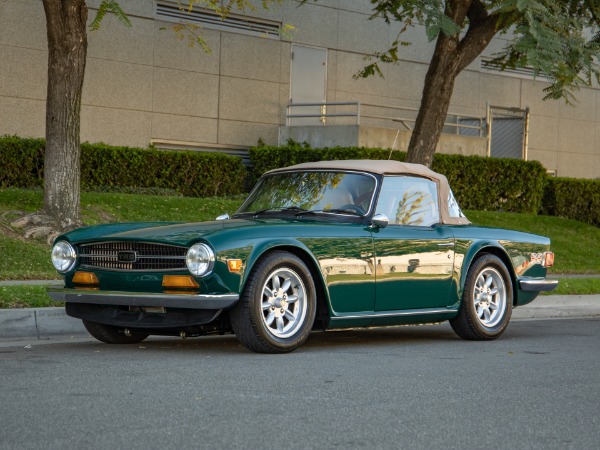History of the 1973 Triumph TR6:
The 1973 Triumph TR6 represents a significant chapter in the illustrious history of British sports cars. Introduced in 1969, this model was the sixth iteration in the Triumph TR series, which had its origins in the post-World War II era. It was a time when enthusiasts craved thrilling driving experiences, and the TR6 aimed to deliver just that.

Triumph’s Rich Legacy:
To fully appreciate the TR6, it’s essential to understand Triumph’s broader history. Initially, the company’s journey began in the late 19th century as the Triumph Cycle Company, specializing in bicycles. Later on, in the early 20th century, Triumph transitioned into the automobile industry, setting the stage for its future as an automaker. Over the years, Triumph gained renown for crafting stylish, performance-oriented vehicles, solidifying its place in automotive history.
OUR 1973 TRIUMPH TR6
‘We are proud to present an absolutely superb and expensively customized example of this 1973 TR6 Roadster Convertible in the most classic and very striking ‘British Racing Green’ color paint with a newly upholstered Tan interior and soft top and tonneau cover and with a full weather tonneau cover and a file documenting its full and truly no expense spared frame off restoration!’
Engine and Performance Specifications:
The beating heart of the 1973 TR6 was its 2.5-liter inline-six-cylinder engine. In 1973, this engine generated 104 horsepower, which, combined with the car’s relatively lightweight construction, resulted in an exhilarating driving experience. The standard transmission was a 4-speed manual, though an optional 5-speed manual gearbox was available, enhancing the TR6’s versatility.
Performance-wise,
the TR6 boasted a 0-60 mph time of approximately 8.2 seconds, placing it in the league of sports cars of its era. With a top speed of around 120 mph, it offered a thrilling ride that could satisfy the most demanding drivers. These specifications underscored the TR6’s capability and appeal.

The Designers of the TR6:
Behind the TR6’s iconic design were talented individuals who left an indelible mark on the automotive world. One of the most notable figures was Giovanni Michelotti, an Italian designer renowned for his contribution to the TR series’ aesthetic appeal. Michelotti’s styling prowess gave the TR6 its unmistakable long hood, distinctive front grille, and timeless convertible body, all of which contributed to its enduring allure.

Racing History of the 1973 Triumph TR6:
Beyond its status as a classic British sports car, the 1973 Triumph TR6 also made its mark in the world of motorsports. The TR6’s racing history is a testament to its performance capabilities and the enthusiasm it generated among racing aficionados.
Triumph, as an automaker,
recognized the potential of the TR6 in competitive racing. The car’s robust inline-six-cylinder engine and agile handling made it a compelling choice for various racing events.
One notable event in which the TR6 participated,
was the Sports Car Club of America (SCCA) events. These competitions allowed enthusiasts and amateur racers to showcase their skills on tracks across the United States. The TR6’s success in SCCA events, particularly in the sports car racing category, helped cement its reputation as a formidable contender on the racing circuit.
The TR6’s racing pedigree,
extended beyond American soil. It also found success in various European racing events, further solidifying its status as a competitive sports car. Triumph actively promoted the TR6’s racing achievements, which contributed to its popularity and desirability among performance-oriented drivers.
OUR OTHER INVENTORY
In summary
The 1973 Triumph TR6 stands as a testament to Triumph’s remarkable legacy in the world of British sports cars. Its engine and performance specifications made it a true enthusiast’s machine, while the creative genius of designers like Giovanni Michelotti ensured that its iconic design would be celebrated for generations to come.

